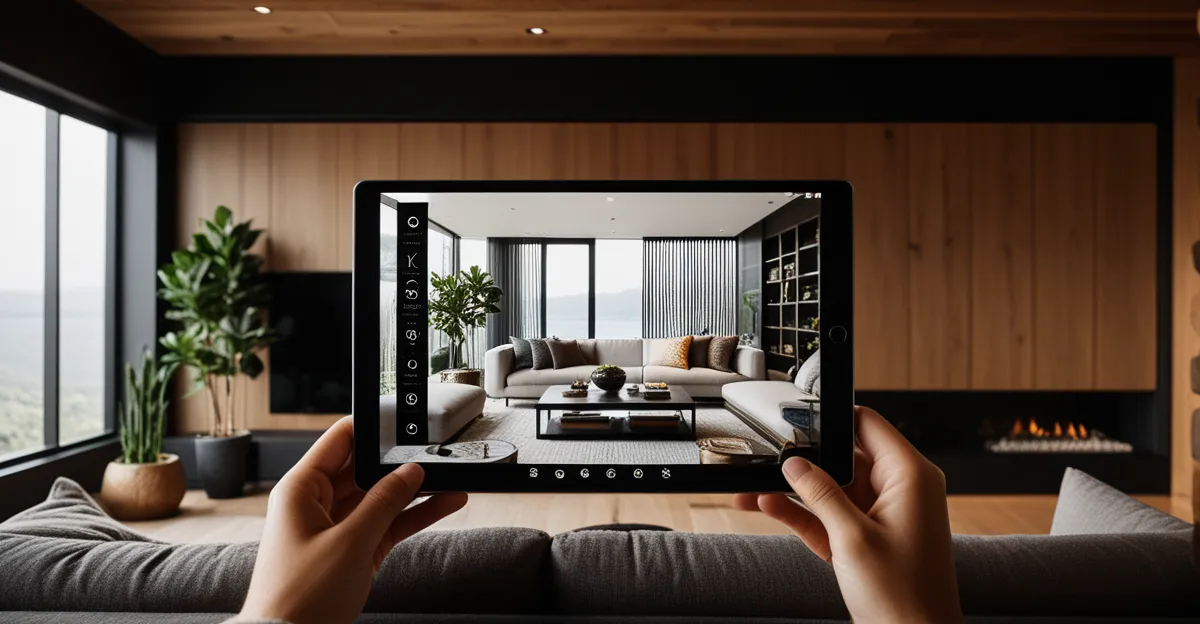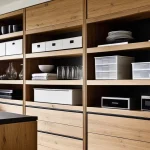Immediate Psychological Impact of Personalised Interiors
Personalised interiors significantly influence personal space psychology, directly shaping our mood and environment. When a room reflects individual tastes and memories, it fosters a sense of belonging and security, which can dramatically enhance emotional well-being. Research consistently shows that carefully chosen décor can reduce stress and promote relaxation, making the home atmosphere a sanctuary from external pressures.
How exactly do décor choices affect well-being? The key lies in the familiarity and control associated with personalised spaces. Having control over your environment—selecting colours, objects, and layouts that resonate with you—creates a mental space conducive to comfort and resilience. This influence extends to reducing cortisol levels, the hormone linked to stress, which underlines the therapeutic effect of a well-curated personal space.
Also to see : How Can Smart Storage Solutions Transform Your UK Home Interior?
Psychological studies have explored the link between environment and mood, revealing that spaces aligned with personal identity can improve mental health by enhancing feelings of positivity and motivation. In essence, personalised interiors act as psychological anchors, offering emotional stability and a refuge that helps manage everyday anxieties. Thus, investing time in personalising your home atmosphere isn’t merely aesthetic—it’s a foundational act for mental well-being.
Immediate Psychological Impact of Personalised Interiors
Creating a personal space tailored to your preferences has a profound effect on emotional well-being. When your home atmosphere reflects your personality and tastes, it fosters comfort and a sense of control, which can decrease stress levels significantly. Studies in personal space psychology highlight that environments aligned with individual preferences encourage relaxation and mental restoration.
Additional reading : How Can Smart Storage Solutions Transform Your UK Home Interior?
The connection between mood and environment becomes especially clear in customised interiors. For example, spaces featuring favourite colours, meaningful objects, or layouts that suit daily routines contribute positively to mood regulation. This happens because the brain associates these elements with safety and familiarity, reducing anxiety and promoting calmness.
Psychological research supports that personalised environments mitigate stress by providing sensory and emotional support. This includes not only visual elements but also spatial organisation, which allows individuals to navigate their homes with ease. Ultimately, a well-designed personal space enhances both mental clarity and emotional resilience, making your living area not just a shelter but a vital source of psychological comfort.
The Role of Colour, Light, and Texture in Mood
Personal space psychology is deeply influenced by the strategic use of colour, light, and texture, all of which shape the overall mood and environment within a home atmosphere. Colour psychology shows that specific hues can evoke varied emotional responses: for example, blues and greens often promote calmness and relaxation, while reds and oranges can energize and stimulate. Selecting colours that resonate personally can reinforce feelings of comfort and positivity, significantly boosting emotional well-being.
Lighting for wellness also plays a crucial role. Exposure to natural light helps regulate circadian rhythms, improving sleep and mood, whereas poorly designed artificial lighting can induce fatigue or irritability. Integrating ample natural light or carefully chosen warm artificial lighting creates an inviting home atmosphere conducive to both relaxation and alertness.
Sensory design extends beyond visual factors to include textural variety. Combining soft fabrics, smooth surfaces, and tactile contrasts in furnishings and accessories enriches sensory stimulation, which in turn enhances comfort and mental engagement. Together, these elements help create a personalised environment where mood and environment align, supporting emotional balance and stress reduction through sensory harmony.
Immediate Psychological Impact of Personalised Interiors
Personalised interiors play a critical role in shaping personal space psychology by directly influencing our mood and environment. When home atmosphere reflects one’s unique tastes and preferences, it fosters a stronger sense of control and comfort, essential factors in emotional well-being. How exactly does décor achieve this? By embedding familiar colours, textures, and spatial arrangements that resonate emotionally, personalised spaces create a calming effect that helps reduce stress.
The link between personalised space and stress reduction is backed by psychological research. Studies show that environments tailored to individual needs lower cortisol levels, which directly impacts anxiety and mood stability. For instance, when a living area contains meaningful objects and organised layouts, it helps the brain associate the space with safety and predictability—key elements that ease mental load and promote relaxation.
Moreover, research emphasizes the importance of sensory experiences within personal spaces. The combination of visual, tactile, and spatial elements contributes to a home atmosphere that nurtures mental clarity and emotional resilience. In short, by consciously designing personalised interiors, individuals can harness the power of environment to enhance overall psychological health.
Immediate Psychological Impact of Personalised Interiors
Understanding the personal space psychology behind customised interiors reveals how crucial they are for mood and environment. When a living space genuinely reflects individual preferences, it creates a powerful sense of ownership and control—key factors in reducing stress and enhancing emotional well-being. This sense of control makes the home atmosphere a sanctuary, helping to lower cortisol levels and strengthen mental resilience.
How do décor choices influence emotional well-being? Selecting décor elements that resonate with personal identity triggers positive associations in the brain, which directly improve mood and reduce anxiety. Psychological research confirms that environments tailored to individual tastes support relaxation and rejuvenation by providing consistent sensory cues linked to comfort and safety. For example, incorporating familiar colours, textures, or furniture arrangements that one finds soothing can help regulate emotions efficiently.
Moreover, personalised spaces not only reduce stress but also actively promote mental clarity. By fostering an environment aligned with one’s psychological needs, the mood and environment coalesce to form a harmonious setting that nurtures motivation and positivity. These insights underscore the importance of investing effort into home customisation—not merely for aesthetic appeal but as a practical strategy for improving overall mental health.
Immediate Psychological Impact of Personalised Interiors
Personalised interiors markedly influence personal space psychology by shaping both mood and environment in profound ways. Décor choices that align with individual preferences foster a unique home atmosphere that supports emotional balance and mental health. How exactly do these choices impact well-being? By integrating familiar elements such as colours, textures, and spatial arrangements, personalised spaces promote feelings of safety and control, which are foundational to reducing stress.
What links exist between personalised spaces and stress reduction? Research indicates that environments tailored to personal tastes significantly decrease cortisol levels—the hormone associated with stress—leading to improved mood stability. When people surround themselves with meaningful objects and layouts that reflect their identity, it creates a psychological refuge that mitigates anxiety and fosters calmness. This effect is not incidental; it arises because the brain associates personalised settings with predictability and comfort.
Psychological studies also support how environment affects mood through sensory and spatial factors. The interplay of visual cues, tactile sensations, and organised layouts in personalised interiors cultivates a home atmosphere rich in emotional support. This environment encourages relaxation, mental clarity, and resilience. In this way, consciously crafted interiors do more than decorate a space—they harness the power of personal space psychology to enhance overall psychological well-being.
Immediate Psychological Impact of Personalised Interiors
Personalised interiors profoundly affect personal space psychology by directly shaping the mood and environment within a home atmosphere. How do décor choices influence emotional well-being? Psychological research shows that selecting elements aligned with one’s preferences—such as colours, textures, and familiar objects—creates a space that the brain recognizes as safe and comforting. This recognition lowers cortisol, the stress hormone, thus reducing anxiety and promoting relaxation.
The links between personalised space and stress reduction are supported by studies revealing that environments tailored to individual needs help restore mental balance. By offering consistent sensory cues associated with positive memories and personal identity, these spaces enhance emotional stability. For instance, meaningful layouts or personal mementos embedded in décor trigger the brain’s reward pathways, fostering calmness and resilience.
Research further confirms the significant role of home atmosphere in mood regulation. Environments that reflect personal tastes encourage feelings of control and ownership, fundamental to emotional well-being. In such settings, daily stressors diminish as the customised space acts as a psychological sanctuary, enabling mental clarity and sustained positivity. Clearly, personalised interiors do more than decorate—they provide a foundation for improved mental health.
Immediate Psychological Impact of Personalised Interiors
Personalised interiors profoundly influence personal space psychology by shaping the mood and environment of a home atmosphere. Décor choices contribute directly to emotional well-being by creating spaces that feel safe, familiar, and meaningful. How do these choices affect emotional health? By selecting colours, textures, and layouts that resonate with personal identity, individuals establish an environment that fosters comfort and reduces mental strain.
What links exist between personalised space and stress reduction? Research shows that customised environments decrease cortisol levels—the hormone linked to stress—due to the brain’s association of familiar surroundings with safety and predictability. This sense of control is critical; when a space reflects individual preferences, it offers psychological refuge that promotes calmness and alleviates anxiety.
Psychological studies further reveal how environment impacts mood through sensory and spatial factors. The combination of visual cues, tactile sensations, and organised layouts reinforces a home atmosphere conducive to emotional balance. For example, personalised interiors that incorporate meaningful objects and arrangements provide consistent sensory input, which supports mental clarity and resilience. In summary, deliberately crafted personalised spaces harness the power of personal space psychology to improve both mood and environment effectively.
Immediate Psychological Impact of Personalised Interiors
Personalised interiors profoundly influence personal space psychology by shaping both mood and environment to create a supportive home atmosphere. How do décor choices influence emotional well-being? Selecting décor elements that resonate with individual identity triggers positive neural responses, fostering comfort and a sense of control. This feeling of ownership over one’s space is crucial for reducing stress and enhancing psychological stability.
What links exist between personalised space and stress reduction? Studies demonstrate that tailored environments help lower cortisol levels, the hormone linked to stress. When personal items, colour schemes, and spatial arrangements align with preferences, they produce predictable and calming sensory input. This helps the brain associate the home atmosphere with safety, enabling relaxation and emotional balance even during stressful periods.
Psychological research further supports how environment affects mood through sensory and spatial factors. The integration of familiar colours, textures, and meaningful objects enriches the sensory experience, promoting mental clarity and emotional resilience. Organised layouts facilitate ease of movement and reduce cognitive load, enhancing the mood and environment by fostering calm and motivation. In sum, personalised interiors serve as a dynamic tool within personal space psychology, directly enhancing overall emotional well-being.









